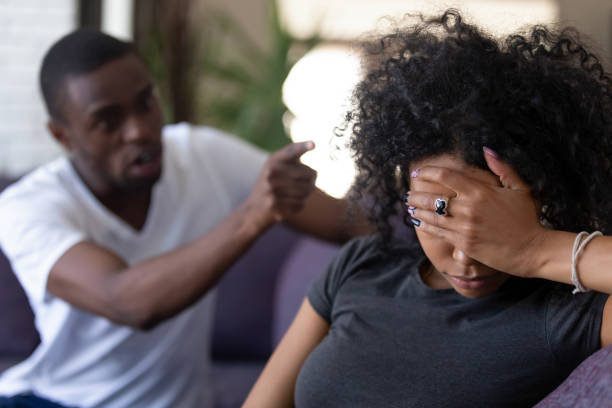
How to Get Out of an Abusive Relationship: Taking the First Step Towards Freedom
Abusive relationships are not only physically dangerous but can also be emotionally and mentally harmful. If you find yourself in a situation where you feel trapped, scared, or uncertain, it’s crucial to know how to get out of an abusive relationship. This step can be challenging, but it is possible. By recognizing the signs of abuse, building a plan for your escape, and reaching out for help, you can free yourself and take the first step toward healing.
In this post, we’ll cover the signs of abuse, why it’s hard to leave, and provide you with a detailed guide on how to get out of an abusive relationship. We’ll also offer practical advice and resources to help you throughout the process.
Recognizing the Signs of an Abusive Relationship
Before you can begin the process of leaving, it’s important to recognize the signs of abuse. Abuse can take many forms: physical, emotional, verbal, and even financial. No matter the type of abuse, it’s always harmful and should never be ignored.
Here are some common signs that you might be in an abusive relationship:
- Physical Abuse: Hitting, slapping, choking, pushing, or any other form of physical harm.
- Emotional Abuse: Insults, humiliation, manipulation, and constant belittling.
- Verbal Abuse: Yelling, name-calling, and threats of harm.
- Financial Control: Withholding money, controlling your spending, or preventing you from working.
- Isolation: Preventing you from seeing friends and family, or controlling your social interactions.
Recognizing these signs is the first step in knowing how to get out of an abusive relationship. It’s important to trust your instincts and acknowledge that the abuse is not your fault.

Why It’s So Hard to Leave an Abusive Relationship: Red Flags
Leaving an abusive relationship is not as simple as walking out the door. There are many psychological, emotional, and practical barriers that prevent someone from leaving. Understanding these obstacles can help you navigate the process of leaving with more clarity.
- Fear: Many people stay in abusive relationships because they are afraid of what might happen if they leave. Abusers often threaten violence or harm to you or your loved ones if you try to leave, and this fear can keep you stuck.
- Low Self-Esteem: Emotional abuse can erode your self-confidence, making you feel unworthy of better treatment. You might begin to believe the abusive partner’s hurtful words and feel like you have no options.
- Financial Dependence: If the abuser controls the finances, you may feel trapped because you don’t have the resources to support yourself or find a safe place to go.
- Love and Attachment: Despite the abuse, you may still love your partner or feel emotionally attached to them. This emotional bond can make leaving feel confusing and overwhelming.
- Lack of Support: Many people in abusive relationships feel isolated from friends and family. Abusers often intentionally separate their victims from loved ones, making it harder to get help or leave the relationship.
While leaving can be incredibly difficult, it’s important to recognize that your safety and well-being come first. How to get out of an abusive relationship may not be easy, but there are ways to break free from the cycle of abuse.
How to Get Out of an Abusive Relationship: Steps to Take
Leaving an abusive relationship requires careful planning, support, and courage. Here’s a step-by-step guide on how to get out of an abusive relationship safely:
1. Reach Out for Support
The first and most important step is to reach out to someone you trust. This could be a friend, family member, or a support organization. Talking to someone about your situation can provide you with emotional support and practical advice.
- National Domestic Violence Hotline: If you feel unsafe or unsure of where to turn, the National Domestic Violence Hotline is a valuable resource. You can call them at 1-800-799-7233 or visit their website for live chat options. They can connect you with shelters, legal assistance, and other resources.
- Therapists or Counselors: Speaking with a therapist who specializes in abuse can help you process your emotions and develop a plan for leaving.
2. Create a Safety Plan
It’s essential to plan your escape carefully to minimize risks. A safety plan includes steps you can take in case of an emergency. Here’s how you can create one:
- Identify a Safe Place: Make a list of places you can go for help, such as a friend’s house, a family member’s home, or a local shelter.
- Pack an Emergency Bag: Pack a bag with essential items like identification, medications, money, clothes, and important documents. Keep the bag hidden and ready to grab in case you need to leave quickly.
- Know Your Rights: Research your legal rights, especially if there are children involved. You may need to file for a restraining order or other protective measures.
- Plan Your Escape: Figure out how you will leave, where you will go, and how you’ll get there. Make sure to leave when the abuser is not around, and take precautions to avoid being tracked.
3. Take Action When You Are Ready
Once you’ve prepared and are ready to leave, take action. It may be tempting to wait for the “right time,” but the safest time is when you have a plan in place and can execute it as safely as possible.
- Alert the Authorities: If necessary, contact the police and let them know about your situation. If you’re in immediate danger, don’t hesitate to call 911. Having a report on file can help protect you in the future.
- Go to a Shelter: Shelters for domestic abuse victims can provide you with immediate safety and support. They can help you get back on your feet while providing counseling and legal resources.
4. Seek Professional Help for Healing
Once you’ve left the relationship, it’s important to continue seeking support as you heal. Recovery from abuse can take time, and you may need professional help to navigate the emotional aftermath. Therapy can help you rebuild your self-esteem, address trauma, and help you understand the impact of abuse.
- Individual Therapy: Therapy with a counselor who specializes in abuse can help you process your emotions and work through any guilt or shame you may feel. It can also help you develop healthier relationships in the future.
- Support Groups: Joining a support group for survivors of abuse can be incredibly beneficial. Being in a group with others who understand your experience can help you feel less isolated.
- Legal Support: If you need legal advice, such as filing for a restraining order or custody arrangements, consider seeking assistance from a domestic violence lawyer.
5. Rebuilding Your Life
After leaving an abusive relationship, it’s essential to focus on rebuilding your life. Start by surrounding yourself with positive, supportive people and focusing on your personal growth. Take small steps towards reclaiming your independence, whether it’s through pursuing a hobby, returning to work, or going back to school.
How to Get Out of an Abusive Relationship: What’s Next?
Leaving an abusive relationship is just the beginning of your journey toward healing and self-discovery. While the process of leaving can be long and difficult, it’s important to remember that there is help available to guide you through every step of the way.
Take your time and be gentle with yourself. This is not an easy process, but it is possible to overcome the trauma and build a future where you are safe, happy, and whole.
Remember, you deserve love, respect, and happiness—don’t settle for anything less.


